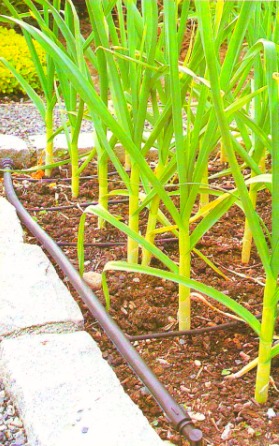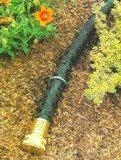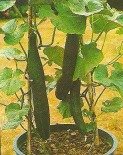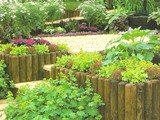|
Vegetable Garden Irrigation is Definitely a Big TimesaverVegetable garden irrigation is an excellent watering system for your garden. There’s no need to worry about getting up early in the morning to water your vegetable garden plants as they’re already taken care of. Sounds good doesn’t it? And better yet, this system saves you time and money. You can go and take a vacation without having to worry about your garden plants. Once you install the vegetable garden irrigation system correctly and place a timer things can flow very easily.  We’re going to talk about how to install it in your garden as well as the benefits. How to Install Vegetable Garden Irrigation
When attaching it, place it upside down. This is to ensure that the base of the hose connector is connected to the faucet. Take one arm and attach it to a garden hose to transfer water to the irrigation system. The other arm can be attached to a supporting hose to help facilitate any additional watering. Assign a small sprinkler to each plant to provide them with water. All of the plants will be connected to the water supply along with the drip irrigation network lines. This is done by installing 1/4 and 1/8 inch plastic hollow cylinders and attaching it to the main hose. That’s how the water will be supplied to the plants where it will travel from the main hose to them. It’s good to use 2 emitters for plants that need lots of water like tomatoes and cucumbers for example. Filters are very handy towards extracting any rust and dirt from the drip irrigation line.A pressure regulator can be used as well to make your system operate smoothly. You can set up your timer to operate for a specific time everyday thereby creating an automated watering system. Use a scissors to cut a ¼ inch of the plastic and apply the ends into the connectors with some force.This is to lengthen out the lines towards your plants. Use the 1/8 inch lines to connect the main lines to the emitters. …Y connector, timer, pressure unit, hose-thread adapter, garden hose, a next hose-thread adapter and the irrigation line. Your water source is connected to the water system’s main ¼ inch line. First set the timer manually and then set it on. Turn the faucet on and you should see the small sprinklers sprouting like mini-fountains. If you want to adjust the level of water, you can adjust the flow from the faucet. The small sprinklers shouldn’t look as though they’re bursting with force. However, the flow of water shouldn’t look too insufficient though. Check for them between the faucet and the tools. If you notice any leaks change the adapter to a hose type threading. Any leaks that appear around the connectors or small sprinklers, you can easily fix them by applying some tape. You’ll be able to identify the best fit by noticing if your plants are receiving enough water. Vegetable Garden Irrigation Tips1. If you want, you can purchase sprinkler and drip irrigation kits from a garden store that’s closet to your area. These kits are perfect for beginners and the instructions that they come with are really quite easy to follow. If you not confident about doing this for yourself, you can consult with a professional at a local garden store. There are kits that are designed for container gardens as well as small, simple gardens. As a matter of fact, drip irrigation systems can be used for any type of garden. 2. Soaker hoses are excellent alternatives.  Position it to look like a snake around your garden beds and cover them up with some mulch to conceal them. These are usually 25 or 50 feet long. The end is well capped and the water is released gradually to provide adequate watering. Use a pressure regulator unit to prevent any water backups.To make things flow pretty easily, install an automated timer. Water System Checklist for your Vegetable Garden IrrigationGet together a pen and paper to make your list. This is just to be fully organized so that you’ll know what you have and what you’ll need. Are you ready? Ok… you can write down these things listed below on a piece of paper and decide what you may need.
5 Benefits of a Vegetable Garden Irrigation System1. This system allows you to save half the amount of water used in manual watering. 2. Erosion is prevented and there is no escape of any nutrients. The water flow runs on a consistent basis. It penetrates through the soil and there you go, the growth of your plants is well stimulated. 3. The good news is that there is no need to worry about weeds as this method of watering discourages their appearance anyway. The flow of water is supplied to the required location alone. 4. You don’t have to spend a lot of time operating and moving your sprinklers. All you need is a timer with some batteries to add to your system to provide you with some leverage. 5. Your vegetable garden irrigation system can be adjusted to suit your lawn and garden requirements whenever you’re ready to. Vegetable garden irrigation can make vegetable gardening really stress-free. It’s an excellent form of garden leverage. Vegetable garden irrigation can definitely save you time and energy when it comes to watering your crops.
|









